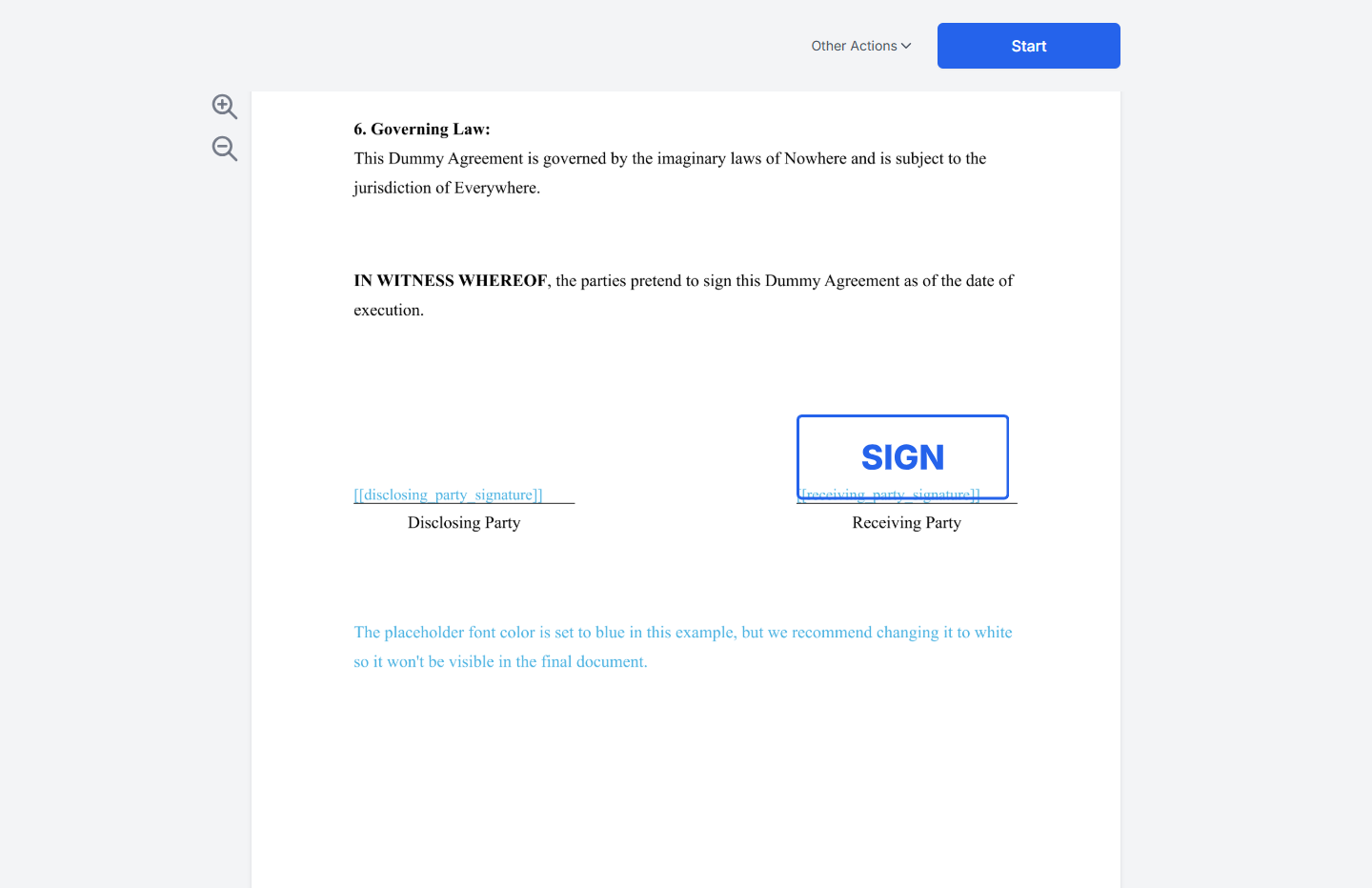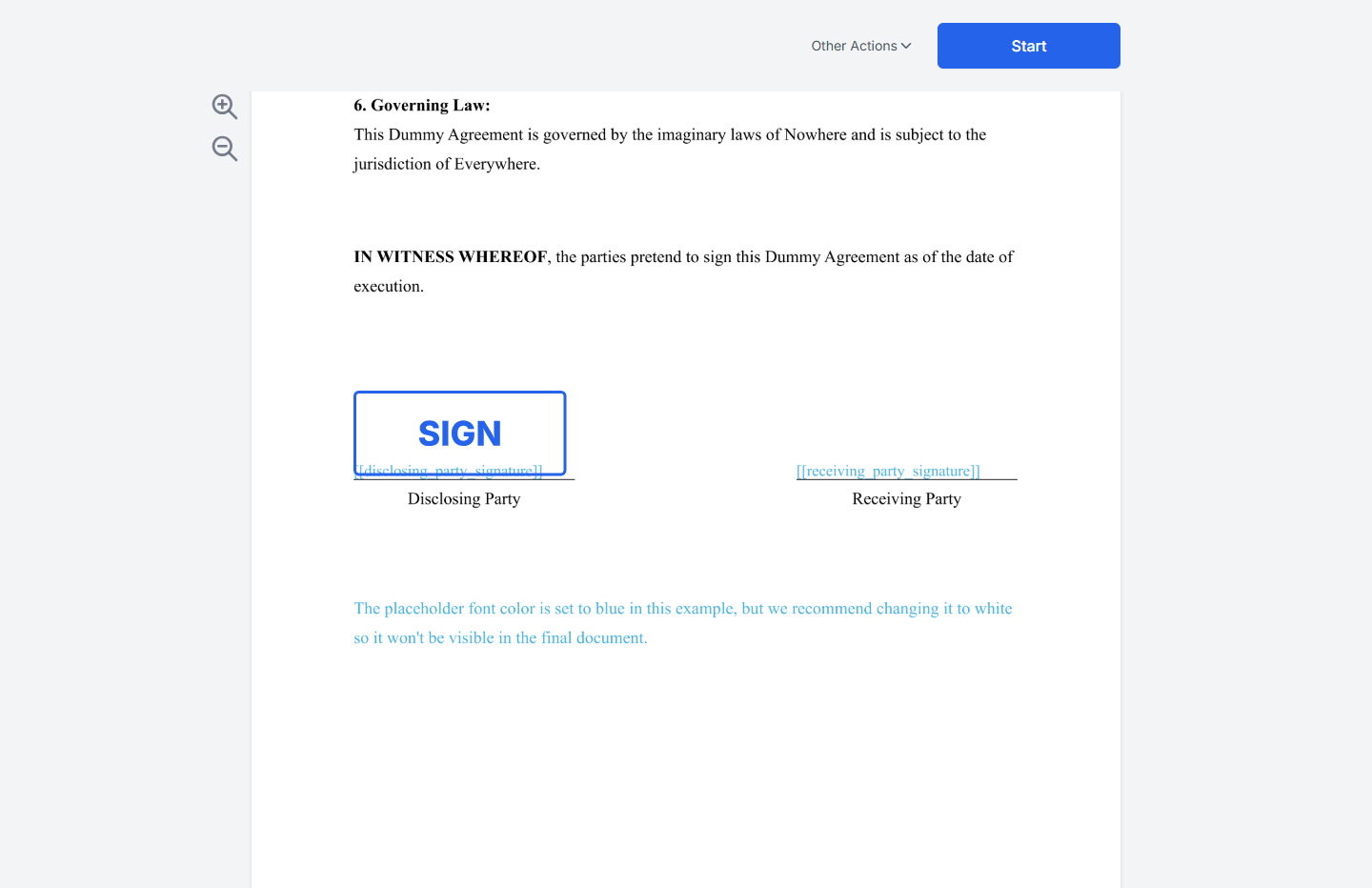routing property in the Envelope.
There are two options: Sequential and Parallel. By default, SignatureAPI uses sequential routing.
With Parallel Routing, the envelope is sent simultaneously to all recipients. Each recipient can sign the document whenever they want, and there is no required signing order.
In this example, we will create an envelope with:
- A single PDF document.
- Two recipients (signers) signing in parallel, with the keys
disclosing_partyandreceiving_party. - Two signature places positioned with placeholders
[[disclosing_party_signature]]and[[receiving_party_signature]].
- The recipient will receive an email with a link to sign.
- The account’s default language, timezone, and timestamp format used.
Prepare your Document
Placeholders are text markers within your PDF document indicating specific locations for items such as signatures, initials, or text inputs. Each placeholder follows the format[[place_key]], where place_key uniquely identifies the specific location within your document.
In this example, we have prepared a document containing the placeholders [[disclosing_party_signature]] and [[receiving_party_signature]]. These placeholders mark the exact positions within the document where the signatures corresponding to each key (disclosing_party_signature and receiving_party_signature) will be inserted.
Example document
Download the PDF used in this example.

Create the Envelope
When creating the envelope:- Set
routingtoparallel. - Add your recipient objects to the recipients property of the Envelope in any order, as they’ll be sent simultaneously.
- Add the signature place objects to the
placesarray inside the document object:key: Must match the placeholder within the document file (e.g.,disclosing_party_signature).type: Set assignature.recipient_key: Matches recipient keys (disclosing_partyandreceiving_party).
Result
If successful, SignatureAPI will send emails to both Jane Doe (“disclosing_party”) and Richard Roe (“receiving_party”) with links to sign the document. Each signer places their signature on their designated signature line.

Try It
Try this example in Postman using your test API key to create a free, non-binding test envelope. Test envelopes won’t send emails, but you can review them in your dashboard.Keep Learning
- Learn about sequential signing for workflows where the order of signing is important.
- Explore other types of places, such as initials, text inputs, or completion dates.
- Position signatures using precise coordinates.